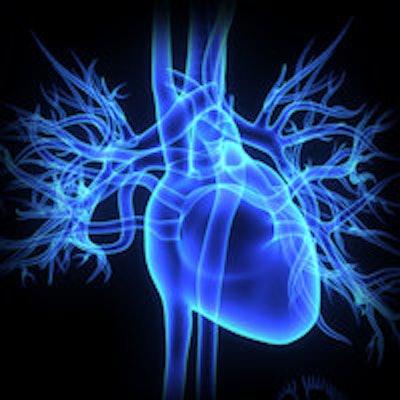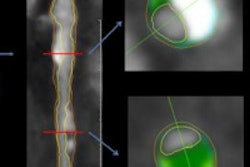
Routine mammography screening could be a useful tool for identifying women at risk for heart disease by analyzing levels of breast calcification, according to a study to be presented at the upcoming American College of Cardiology (ACC) meeting in Chicago.
Study author Dr. Harvey Hecht of the Icahn School of Medicine in New York and colleagues found a link between the amount of calcium in the arteries of the breast, which is visible on digital mammography, and the level of calcium buildup in the coronary arteries. In fact, Hecht's group found that the presence of breast arterial calcification (BAC) appears to be an equivalent or stronger risk factor for coronary arterial calcification (CAC), an early sign of coronary artery disease, than other individual risk factors such as high cholesterol, high blood pressure, and diabetes.
The authors noted that while cardiovascular disease is the leading cause of death in women, there is no routine screening program for coronary artery disease as there is with breast cancer screening. At the same time, previous studies have established a link between breast arterial calcification and both coronary calcification and heart disease.
The researchers decided to quantitatively examine BAC as determined from digital mammography studies and compare it to CAC scores derived from CT scans, and also compare the correlation of both to risk evaluation tools for heart disease such as the Framingham risk score. Establishing a link between BAC and heart disease risk could lay the groundwork for large-scale cardiac risk assessment in women who are already getting mammography screening exams, without exposing them to additional cost and radiation exposure.
The study included 292 women who had digital mammography and noncontrast CT scans of the chest within one year. Coronary calcium scores were derived from evaluations by an experienced chest radiologist, while a second radiologist analyzed digital screening mammograms and recorded BAC scores.
Final analysis showed a relationship between the two types of calcium scores: 42.5% had evidence of breast arterial calcification, and 70% of this subset was also found to have CAC. Of those with CAC, 63% also had breast arterial calcification.
The BAC scores also correlated about as well with Framingham risk scores as CAC scores did: BAC scores showed 55% agreement with Framingham, only slightly lower than 57% for CAC scores.
The researchers found that the sensitivity of breast calcium as a marker for coronary calcium increased with age, from a positive predictive value of 70% in women ages 39-59 to a positive predictive value of 86% in women ages 70-92. Meanwhile, the specificity of BAC scores was of particular value for women in the younger age group, with a negative predictive value of 81% for women ages 39-59, compared with a negative predictive value of only 36% for women ages 70-92.
The researchers also found a higher prevalence of BAC compared with previous studies -- 45.5% compared with 12.7% -- a finding they attributed to the use of digital mammography in the current study, which is more sensitive to BAC than the analog mammography systems used in the past.
In their analysis, the researchers said their data indicated that BAC showed a strong association with CAC in a large cohort of women, was superior to individual cardiovascular risk factors for predicting heart disease, and was equivalent to tools such as Framingham risk score.
How could the results be used in the clinical environment? The researchers believe that women who have high BAC scores on a screening mammogram could be referred for CT scans to derive CAC scores.
"This information is available on every mammogram, with no additional cost or radiation exposure, and our research suggests breast arterial calcification is as good as the standard risk factor-based estimate for predicting risk," Hecht said in a statement released by the ACC. "Using this information would allow at-risk women to be referred for standard CAC scoring and to be able to start focusing on prevention -- perhaps even taking a statin when it can make the most difference."


















